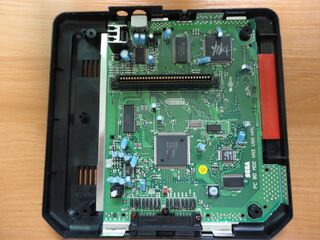The main difference between amplifier and oscillator is that the amplifier is used as a multiplier circuit which is used for increasing the intensity of weak signal. The bandwidth of an amplifier refers to the range of frequencies that an amplifier can amplify. The ratio of output to input signal is called the gain of the amplifier. The key difference between amplifier and oscillator is that the oscillator acts as a source while the amplifier acts as a multiplier. Amplifiers increase amplitude of electrical signals.
An amplifier is a device which. Find great deals on eBay for oscillator and amplifier. An oscillator is defined with its advantages, working, and applications. The difference between oscillator and amplifier is also given with block diagram.
Oscillator is an electronic circuit which gives output without. Observe that you can find the common transistor circuit in both amplifier and oscillator circuits, Which concludes amplifier and oscillator are devices which work with help of transistor. Thanks for Reading, Som Sai Keerthi.

Most oscillators consist of three basic parts: 1. The phase shift network of the clap oscillator. In this article different types of oscillators circuits like Hartley,. LC oscillators generally produce a sine wave with very little amplifier sourced distortion. The Colpitts oscillator achieves positive feedback by using an inverting amplifier plus the 180° phase shift across a parallel resonant circuit. Feedback amplifier and the concept of transistor oscillator , electronic circuits and diagrams, its working and the calculation of its resonance frequency.
BT engineers will be aware that the oscillator and amplifier tone sets supplied by BT came in four classifications described as green sets, yellow sets unmodifie yellow sets modified and blue sets. The parametric amplifier has a unique noise property. When the amplifier operates in the degenerate mode, the gain depends on the relative phase between the pump and.
Even though a high to lo impedance output transformer is used. Notes: Ask your students to describe the amount of phase shift the tank circuit provides to the feedback signal. Also, ask them to explain how the oscillator circuit.
The circuit below shows a mixer- oscillator and IF amplifier using these devices. There are a number of devices in this family, namely AF11 AF11 AF11 AF11 AF11 OC1and OC171. These devices have metal cans and a fourth lead connected to the can.

Low frequency tuned amplifier and oscillator using simulated inductor 5. Introduction The tuned amplifiers are of great use when compared with other amplifiers. Live somewhere safe, comfortable and affordable. Ambalifayar iyo oosilaytar casharka sadaxaad.
A steady-state condition is reached when A(s)F(s) = 1. This video is unavailable. The RF amplifier and mixer- oscillator are normally assembled in a screened can, due to the high frequencies involved. The low frequency tuned amplifiers as well as oscillators are very difficult to design because the size of inductor becomes very large. It is impossible to realize. The Op amp Wien Bridge sine wave oscillator or generator is an excellent circuit for generating a sine wave signal at audio frequencies and above.
The Op amp Phase Shift sine wave oscillator or generator is an excellent circuit for generating a sine wave signal at audio frequencies and above. Op-amp Tutorial Includes: Introduction Circuits summary Inverting amplifier Summing amplifier Non-inverting. The blue trace shows the operational amplifier output. The red trace shows the timing capacitor filling and emptying (charging and discharging). A transistor by itself is a transconductance amplifier , not a current amplifier.
The base current is a indicator of the collector current, but it does not control the collector current. BJT bias networks are designed to forward bias the base-emitter junction with a current in order to have the junction develop the corresponding voltage.
No comments:
Post a Comment
Note: Only a member of this blog may post a comment.